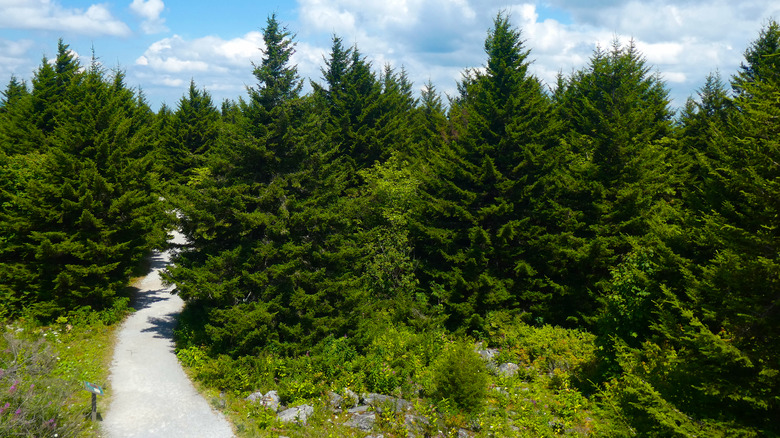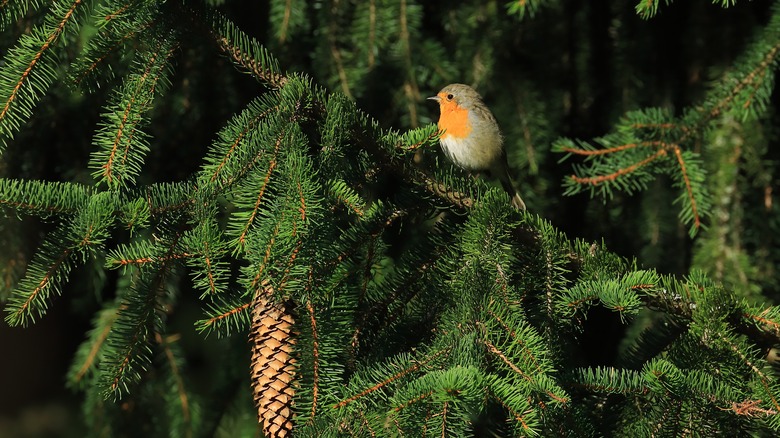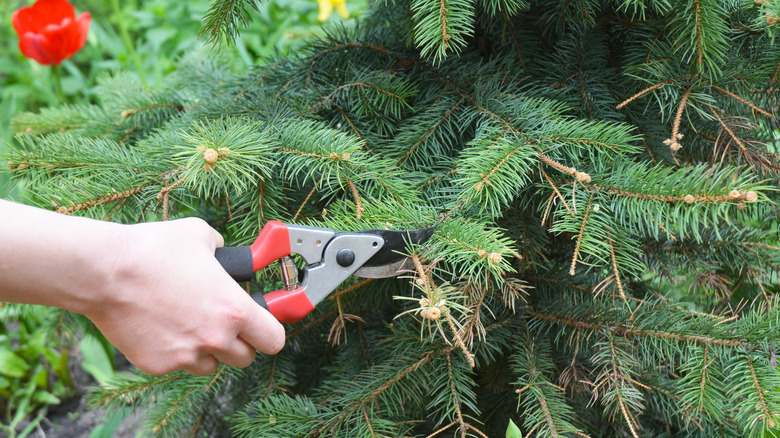The Best Time Of Year To Prune Your Red Spruce Tree
Ah, red spruce trees, nature's ornamental spectacle that graces our backyards with its eccentric cone structure and seasonal allure. It hosts a squad of monikers from yellow spruce to West Virginia spruce, and every May, it generates a magical array of blushing red to radiant green-purple blooms. Yet, maintaining and caring for this member of the evergreen trees isn't a task undertaken lightly or at random. That's especially true for one of its fundamental care regimens — pruning. You see, the task is more nuanced than just grabbing your shears and starting to snip. Enter the million-dollar question: what time of the year should you prune red spruce trees? The short answer is late winter – when these green wonders are in a state of slumber.
The objective of pruning a spruce tree spans beyond keeping the tree neat and shapeful. You can bet that the life-nurturing sunlight and refreshing gusts of air will reach the innermost sections of the tree's canopy. That way, you end up with an aesthetically pleasing, happier, and healthier specimen that effortlessly steals the show in your outdoor space. However, pruning a red spruce isn't just about suiting up in your winter gear, armed with the sharpest clippers on a brisk, frosty morning. There's an art and science to the practice itself. In general, do not let the cuts tarnish your red spruce tree's natural structure.
When to prune red spruce trees isn't just about seasons
Pruning a red spruce tree might not be the top priority in your gardening agenda, as their naturally conical shape allows them to maintain a presentable appearance without much intervention. Yet for those homeowners desiring a denser, bushier tree free of diseases and pests – late winter is showtime. It's all in the tree's physiology. During the frigid months, the red spruce plays the hibernation game. Its metabolism decelerates, entering a resting phase that lets pruning cuts heal seamlessly without sapping energy from other vital growth processes. A winter trim also ensures tree wounds remain in the open for a minimal period before natural healing begins.
But suppose you've inadvertently missed the frosty window. Well, early spring pruning has got you covered. Even as the biotic burst of energy heralds a season of growth, careful pruning will encourage the tree to fill in swiftly with fresh foliage. You could also consider a semi-dormant mid-summer approach. Now, onto the exceptions. If you spot diseased or dead branches, don't wait for the season's invite. Be it winter or the height of summer, snip that sick branch without delay at your convenience. That will save your tree from the malicious grip of disease while safeguarding nearby green companions from potential contagion. Removing sizeable branches at risk of falling eliminates potential safety hazards. Snipping one to two small branches needn't wait until winter, too.
How to prune a red spruce tree like a pro
The thrill of pruning evergreen trees like red spruce begins not in the garden but in your garage or tool shed, where a cutting artillery awaits. Turn your attention towards a more robust ally such as a bypass pruner, lopping shears, or a hand saw. But if you're feeling extra ambitious, crank out that pole saw for those lofty branches. Your initial attack should focus on those branches that are diseased, dead, brittle, or growing in chaotic patterns. Next, take a look at those excess weight lifters (branches growing too long, their tips succumbing to gravity's insistent pull) and those growing vertically up: trim them to allow critical light and air into the inner branches. Remember, flush cuts are open invitations to diseases and pests — looming threats to your tree's well-being. So, avoid them.
Do you notice the sunlight struggling to infiltrate the tree's center? If yes, it's a cue to trim away the excess foliage at the canopy. And remember, sustaining just one trunk leader (the straightest and noblest)and trimming the weaker rivals are key to a well-contoured spruce tree. Also, think twice before chopping the lower branches, which might alter the tree's conical form. But be cautious not to remove more than ¼ to ⅕ of the foliage at a time — over-pruning can overtax the tree's healing capabilities. Indoor spruces, often decorated as a symbol of Christmas, require periodic shearing to constrain their ambitions of height and width.


